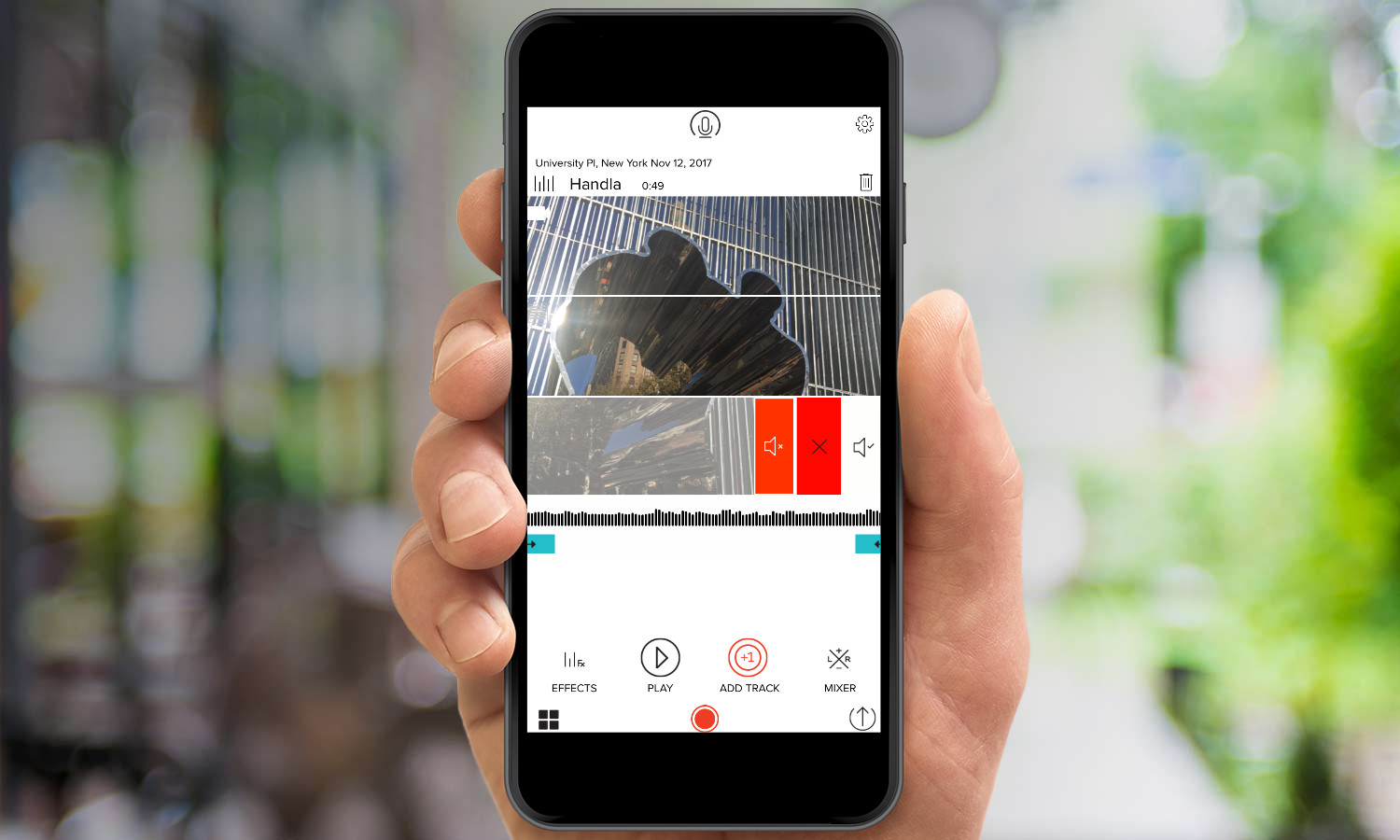This Wireless Mic Is a Videographer's Dream Gadget (Update)
An update to the Mikme microphone turns the wireless device into a gadget that video makers will love.
Editor's Note: On July 17, Mikme announced its more-affordable $199 Mikme Silver, dropped the price of the original Mikme to $299, and added a new USB microphone recording mode.
As any amateur video director has discovered, the microphones inside smartphones are pretty bad at capturing audio, and tethered clip-on lapel mics are messy and don't work with smartphones missing headphone jacks. That's why I'm pretty impressed by the latest update to the Mikme wireless microphone, which I tested this past weekend.

The most obvious feature of the ultraportable mic — a little pricey at $499 (reduced to $299 on July 17) — was its ability to record studio-quality audio from a box that fits in your hand. But this new update arguably makes the Mikme even more important and interesting.
Now users can use the Mikme's iOS app to record video with their iPhone cameras while the Mikme records the accompanying audio, and the Mikme app will sew the two streams together after you're done shooting.
MORE: Best Tech Gifts - Cool Gift Ideas for Men, Women and Kids
To see how well it worked, I brought the Mikme to the Washington Square Arch in Manhattan's Greenwich Village, where I asked a friend to stand near a young busker as I walked around the perimeter of the arch, recording the scene — and the Chinese artist Ai Weiwei's metallic statue nearby — on my iPhone.
The sound quality was great from the video file, capturing not only the singer and his guitar, but the chatter from nearby tourists. The Mikme captures high-resolution audio with its on-board analogue-to-digital converter, showing you the audio levels and using a unique Bluetooth protocol for greater stability.
Get instant access to breaking news, the hottest reviews, great deals and helpful tips.
Here's a sample clip from the Mikme team of how great your finished video product can look with the speaker:
After you first pair your iPhone and your Mikme via Bluetooth, recording the audio and video tracks simultaneously is super easy. You just open the Mikme app, tap Video and hit the record button. As you shoot, you'll see a real-time audio track, so you'll know if the levels need to be reset. (Gain can be controlled from two buttons on the rear of the Mikme.)
When you tap stop, the Mikme iOS app pulls the audio file from the microphone to pair it with the video file. It all works quickly, without much interruption of your flow.

The app next prompts you to take a photo, which it saves as album art for the file. That helped me easily identify clips among my rat's nest of Voice Memo files.
The Mikme app displays three rows of input streams: video, Mikme audio and audio recorded with the iPhone's built-in microphone. To preview the video, you just tap the top row of the three. You can swipe each row to the left to see options for muting and deleting. The phone's audio track is muted by default.
If you're unfamiliar with the Mikme and wonder why it has such a high price, its form is the first thing to note. Not only does its metallic casing feel durable, but at 2.8 x 2.9 x 1.4 inches and 0.35 pounds, the Mikme is small enough to hold in your palm and light enough to never feel like a burden.
The Mikme captures sound using the Cardiod audio pattern, meaning it's sensitive to audio coming from the direction it's facing, and also isolates ambient sound. The Mikme is best held face-up when recording a conversation among multiple people, and should be pointed directly at someone when you want to just get their audio. Its 16GB of internal storage can hold up to 34 hours of WAV-format audio, and its 1-inch gold-plated condenser mic capsule uses a six-line spider-style suspension system to stop it from moving and to eliminate handling noise.
Now that I've spent a weekend with the Mikme, I've added it to my personal wish list, as it feels like the device I want on my next trip. Footage I shot on the noisy, chaotic Venice Beach in California would have been much clearer and focused had I been using the Mikme, and wouldn't have required a ton of audio re-recording when I got back home.
Credit: Henry T. Casey/Tom's Guide

Henry was a managing editor at Tom’s Guide covering streaming media, laptops and all things Apple, reviewing devices and services for the past seven years. Prior to joining Tom's Guide, he reviewed software and hardware for TechRadar Pro, and interviewed artists for Patek Philippe International Magazine. He's also covered the wild world of professional wrestling for Cageside Seats, interviewing athletes and other industry veterans.

